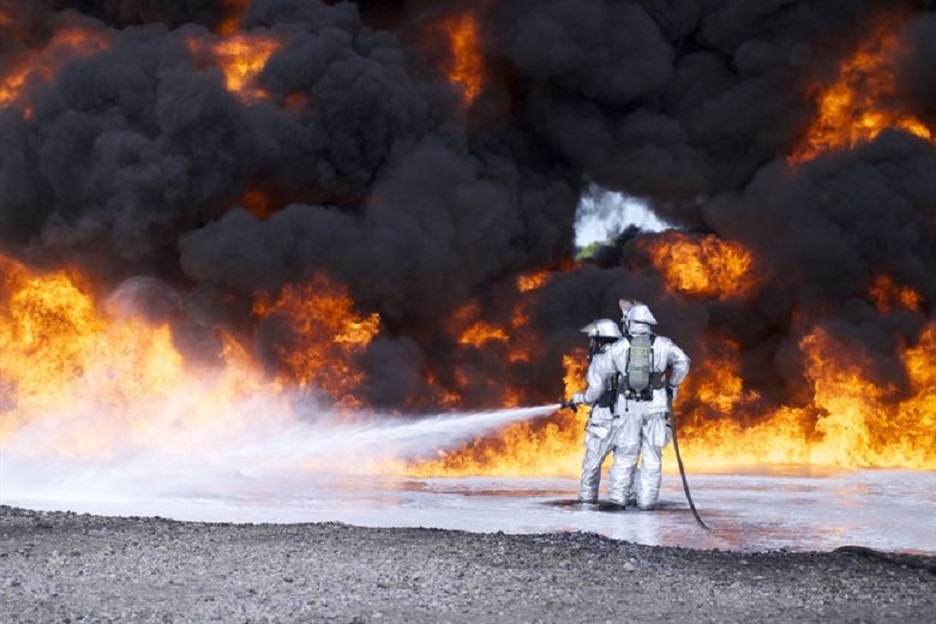This post is also available in:
 עברית (Hebrew)
עברית (Hebrew)
Environmental considerations urge the development of a new fire extinguishing material. The US Defense Department is working to develop new foams that don’t contain hazardous materials. The program is designed to develop technologies to clean up or remediate past environmental contamination and help in developing technologies to avoid future contamination.
Aqueous film-forming foams, or AFFF, rapidly extinguish fuel fires, but they contain PFAS, which stands for per- and polyfluoroalkyl substances. The US Environmental Protection Agency issued a lifetime drinking water health advisory for two substances in the PFAS family as emerging contaminants: Perfluorooctane Sulfonate, or PFOS, and Perfluorooctanoic Acid, or PFOA.
Because the military has used firefighting foams containing PFOS/PFOA, the Defense Department is working to develop new foams that don’t contain PFAS, are not hazardous to health and are just as effective as the previous materials in extinguishing fuel fires.
The mission is to move developed technologies to military installations and put them to use.
Aqueous film-forming foams are also used by oil refineries, municipal fire stations and airports, so the problem goes beyond the military. The organizations participating in the program include the Naval Research Laboratory, academia, and other government agencies or civilian labs.
Christopher Higgins, a DOD-funded professor of civil and environmental engineering at the Colorado School of Mines, said DOD “encourages us to work across disciplines and outside our own university, even at locations throughout the world, to get the best minds to address this.” That broad set of expertise, Higgins said, includes soil chemists, hydrologists, and people focused on groundwater transport or bio-accumulation.
DOD has been proactive in addressing PFAS, he said. After the EPA issued provisional health advisories in 2009, Higgins noted, the Strategic Environmental Research and Development Program and the Environmental Security Technology Certification Program started funding projects and moved very quickly. “DOD was one of the first groups to go out and look for these compounds,” he said.


























